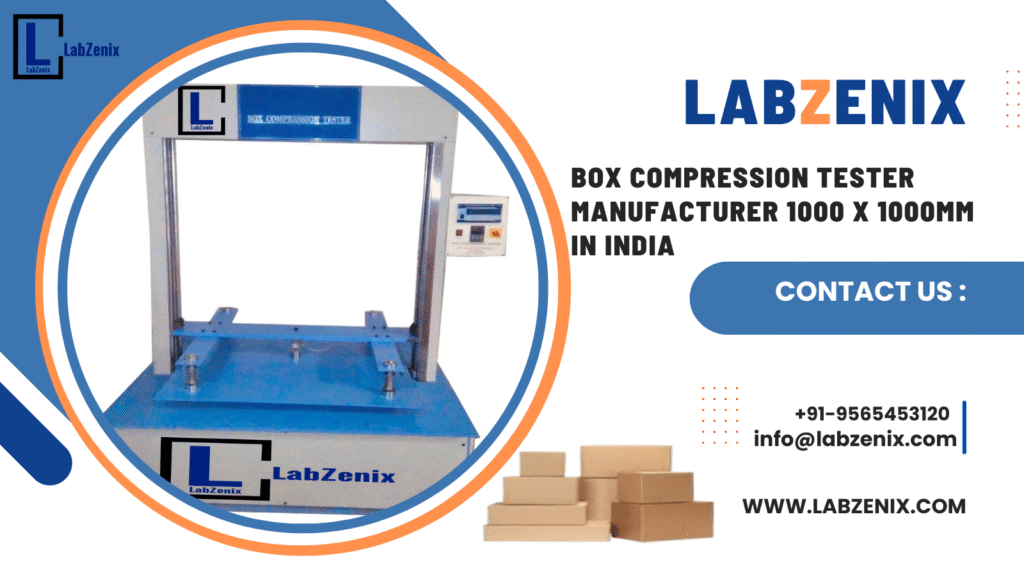In today’s fast-paced logistics and e-commerce-driven marketplace, packaging plays a critical role in protecting goods from damage. But how do you ensure that a box is strong enough to withstand the rigors of shipping and stacking? The answer lies in the Box Compression Tester (BCT) — a highly specialized machine designed to assess the strength and durability of packaging boxes.
Whether you’re a box manufacturer, a quality control technician, or part of a packaging team in a warehouse, this tool is essential for validating performance and reliability.
What Does a Box Compression Tester Do?
A Box Compression Tester is a lab testing device used to measure the compression resistance of corrugated boxes and other packaging materials. It simulates vertical load conditions that boxes face when stacked during storage or shipping. The test determines the maximum force a box can handle before it starts to deform or collapse.
This data helps companies verify packaging quality, optimize design, and reduce damage-related losses. It also ensures compliance with international packaging standards like ASTM D642 and ISO 12048.
Why It’s Essential for Modern Packaging
✔️ Prevents Product Damage – Weak boxes can lead to breakages and increased return rates.
✔️ Boosts Packaging Confidence – Know your packaging can endure the pressure.
✔️ Reduces Excess Material Use – Find the right balance between strength and material cost.
✔️ Meets Compliance Standards – Essential for exports and quality certifications.
✔️ Enhances Brand Reputation – Deliver intact products, every time.
By running box compression tests regularly, manufacturers gain better control over packaging performance and supply chain efficiency.
Main Features of a Box Compression Tester
High-quality compression testers are designed for accuracy, ease of use, and versatility. Common features include:
-
Rigid Compression Plates: Ensure even distribution of force on the box.
-
Digital Control System: Allows real-time tracking of load and deformation.
-
Adjustable Load Speeds: Simulates various handling and stacking scenarios.
-
Built-in Safety Mechanisms: Includes overload protection and emergency stop.
-
USB/PC Connectivity: Easily save, share, and analyze test data.
Some models even come with automated test cycles for faster workflows and touchscreen interfaces for greater control and reporting.
How the Testing Process Works
-
The box sample is placed on the machine’s lower plate.
-
The top compression plate descends with a consistent force.
-
The machine records the maximum compression load the box can withstand.
-
The result provides a clear picture of the box’s load-bearing and stacking capacity.
This process helps manufacturers ensure that every packaging unit meets the required standards before leaving the facility.
Who Needs a Box Compression Tester?
This testing machine is used widely across industries such as:
🔸 Corrugated Box Manufacturers – To verify structural strength
🔸 E-commerce & Retail – To minimize return rates due to damaged goods
🔸 Pharmaceutical & Healthcare – To secure sensitive product deliveries
🔸 Food & Beverage – For maintaining packaging during storage and transport
🔸 Automotive & Industrial Supplies – To support heavy product packaging
Final Thoughts
The Box Compression Testing is more than just a lab machine — it’s a strategic asset for ensuring packaging reliability. In an age where damaged deliveries can harm brand reputation and inflate costs, investing in a BCT brings clarity, quality, and control to your packaging process.
At LabZenix, we provide top-tier Box Compression Testers built to deliver accuracy, durability, and compliance. Upgrade your packaging quality today with reliable testing solutions that give you the confidence to ship smarter and safer.





